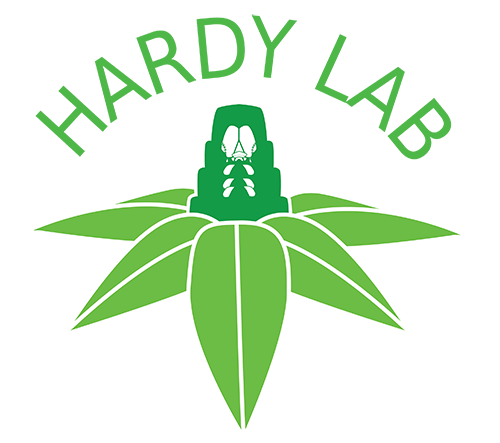Valid Names Results
Artemicoccus echinatus (Balachowsky, 1930) (Pseudococcidae: Artemicoccus)Nomenclatural History
- Ripersia echinata Balachowsky 1930a: 181. Type data: FRANCE: Alpes Maritimes, near Biot, on Fumana spachii.. Holotype, female, Type depository: Paris: Museum National d'Histoire naturelle, France; accepted valid name Notes: Lectotype (designated in Gavrilov-Zimin & Matile-Ferrero, 2015): adult female, France, Alpes-Maritimes, Cap d’Antibes, on Fumana spachii, A. Balachowsky, 10.VII.1929, MNHN 5247-2;
- Amonostherium echinatum (Balachowsky, 1930); Balachowsky 1932d: lxii. change of combination
- Anomostherium echinatum; Balachowsky 1932d: lxii. misspelling of genus name
- Coccidohystrix echinata (Balachowsky, 1930); Gavrilov-Zimin & Matile-Ferrero 2014: 97. change of combination
- Artemicoccus echinatus (Balachowsky, 1930); Kaydan, et al. 2015: 364. change of combination
Common Names
Ecological Associates
Hosts:
Families: 1 | Genera: 2
- Cistaceae
- Fumana ericoides | DanzigGa2014 | (= Fumana spachii)
- Fumana scoparia | Balach1930a
- Helianthemum | Balach1932d
Geographic Distribution
Countries: 1
- France | Balach1930a FoldiGe2018
Keys
- Gavril2016b: pp.185-186 ( Adult (F) ) [Species of Coccidohystrix]
- KaydanPeSz2015: pp.364 ( Adult (F) ) [Key to Artemicoccus species] Key as: Artemicoccus echinatus
- GavrilMa2014: pp.97-98 ( Adult (F) ) [Key to Palaearctic species of Coccidohystrix]
- DanzigGa2014: pp.558-560 ( Adult (F) ) [Palaearctic Coccidohystrix species]
Remarks
- Systematics: Gavrilov-Zimin & Matile-Ferrero, 2015 indicated that this species is not related to the type species and other American species of the genus Amonostherium and they transferred it to Coccidohystrix, in view of the presence of groups of large dorsal conical setae, peculiar cylindrical setae, characteristic "bottle-shaped" simple tubular ducts as well as an absence of ostioles and real cerarii (with trilocular or quinquelocular pores).
- Structure: Adult female. Body broadly oval, about 2 mm long. Antennae 7-segmented. Legs well developed, slender, without translucent pores. Claw with slight denticle. Anal apparatus complete, with inner row of pores, one (partly doubling) outer row of spinulae and 6 long setae. Multilocular pores few, forming transverse rows on V-VIII abdominal sternites. Quinquelocular pores forming transverse rows on abdominal sternites and sparsely scattered on sternites of cephalothorax. Trilocular pores scattered on all body surface and forming groups near spiracles. Simple tubular ducts slightly vary in size (they are similar in size or slightly shorter than large conical setae) scattered on all body surface. (Gavrilov-Zimin & Matile-Ferrero, 2015)
- Biology: Lives on roots of the host plant at sea dunes (Balachowsky, 1936c).
- General Remarks: Description and illustration given by Balachowsky (1936c).Good description and illustration of the adult female given by Balachowsky (1930a).
Illustrations
Citations
- Balach1930a: description, distribution, host, illustration, taxonomy, 181-184
- DanzigGa2014: description, distribution, host, illustration, key, taxonomy, 566-568
- Foldi2001: distribution, 303-308
- FoldiGe2018: distribution, list, 12
- Gavril2016b: key, 185
- GavrilMa2014: distribution, illustration, structure, taxonomy, 97-99
- HuangYa2023: diagnosis, morphology, 234
- KaydanPeSz2015: key, taxonomy, 364
- Willia2017a: catalog, list of species, 246


